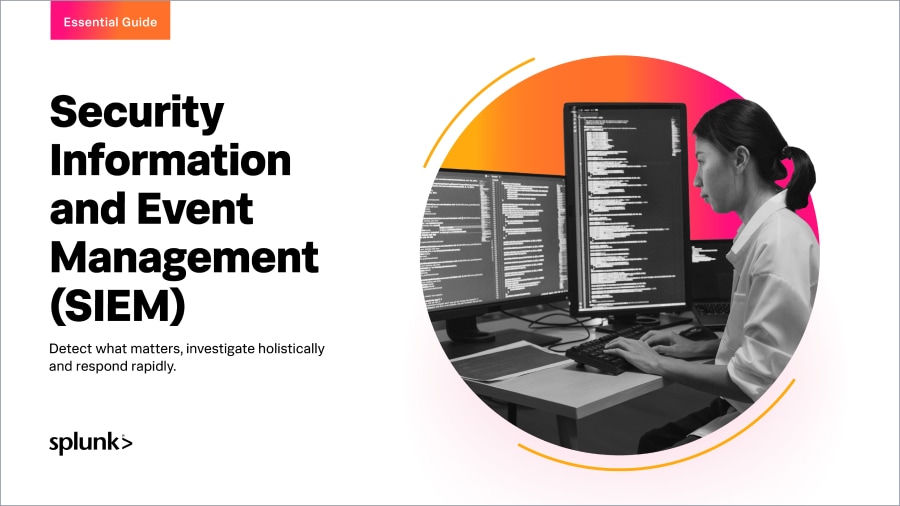Security Event Logs: A Complete Introduction

We live in a hyper-connected world where much of our data is exposed online. That’s why cyber threats are evolving at an alarming rate. Anyone can be a victim of phishing scams or malware: because attackers are becoming smarter and more persistent, enabled by technology.
One primary reason behind this is that businesses now heavily rely on online systems — every login attempt or system modification is a potential entry point for hackers. That’s why businesses suffer the most from keeping their personal and client data safe from cyber threats.
In this article, we will cover how security event logs can help with this.
What are security event logs?
Security event logs are digital records that save and document security-related events within a system or network infrastructure. These logs contain sensitive information like:
- Login attempts
- Failed authentications
- System modifications
- Security policy violations
Organizations use this data to monitor activity for signs of malicious behavior. Each event entry saves key details like event ID, timestamp, source, user information, and event type to obtain detailed insights into system behavior. Analysts then use the insights obtained from security logs to:
- Detect threats.
- Investigate compliance issues.
(Related reading: log files & MELT: metrics, events, logs, tracing.)
Security logs vs. events vs. incidents
A security log, event, and incident may appear similar, but they are different. Let’s understand the difference:
- A security log records activities, like login attempts or file access within a system.
- A security event is any unusual or suspicious activity recorded in these logs that can negatively impact security, like multiple failed logins.
- A security incident occurs when a security event, such as a successful data breach or unauthorized access, becomes an actual problem.
Although these terms are used interchangeably in many domains, each has a different level of importance. A security event may become a possible threat. But a security incident exceeds the threshold and exploits a system.
So, the focus of any organization must be to prevent security events from becoming security incidents.
Basic components of security event logs
Security event logs have 5 basic components. Here’s what they are and how they are used:
- Timestamp: Records the date and period of an event's occurrence to help with analysis and event correlation and find solutions for security incidents.
- Event type: Describes a security event's nature (like a successful or failed login attempt) to classify it as informational, warning, success, or urgent.
- Source: Recognizes the event's origin to track the root cause of any security incident.
- Event ID: Categorizes the type of event (e.g., login attempt or system error).
- User Information: Show details about the user involved (such as their username, domain, or IP address) to identify responsible actions.
Why use security event logs
There was a 72% increase in data breaches in 2023 compared to 2021. Now, you must be wondering what the real issue can be, so here’s the truth — it’s because cyber attackers are constantly finding new ways and entry points to exploit sensitive data.
Security event logs are one of the best methods to ensure proper cybersecurity. They are essential to many business-critical activities, including:
- Threat detection: Identify suspicious activities like failed logins or unusual network behavior and give alerts immediately.
- Incident response: Provide detailed information for quick investigation and resolution of security incidents.
- Forensic analysis: Reconstruct attack timelines to understand how breaches occurred and prevent future incidents.
Major types of security event logs
An organization should know how to differentiate between different security event logs to get a birds eye view of its security monitoring environment. This helps develop a centralized log management strategy.
So, here are the most common types of security event logs:
Security logs
Security logs monitor access control and user behavior events to provide important data to:
- Detect potential breaches.
- Enforce security policies.
They keep track of successful versus failed login attempts or unauthorized access to files or systems.
For example, if the system detects multiple failed login attempts, it will alert the user and the security team about the potential risk of a security breach. That will hinder any unauthorized user from accessing someone’s account until the owner goes through a security authentication process (e.g., two-factor authentication).
System logs
Systems logs track operational information about the underlying system, such as hardware issues and service activity. They help administrators understand whether systems function properly through insights into events like reboots, service crashes, or software updates.
If a company’s server suddenly shuts down, this disrupts business operations, with potential major fallout. In that case, network administrators should quickly turn to system logs and figure out if it’s a driver failure or something else.
If the logs pinpoint the faulty driver, the team must update or reinstall it to restore the server to normal. This takes away all the manual troubleshooting that would be necessary without system logs.
Application logs
Application logs cover events generated by software programs and business applications. They track user activities with applications, like authentication failures or changes in settings. The data obtained from these logs helps spot application-level attacks, such as denial-of-service (DoS) attempts.
Suppose users of a particular web application are experiencing several login failures. Application logs may show the problem with an expired API token connecting the app to the authentication service. To overcome this issue, the team can update the token and restore normal login functionality.
(Related reading: the OSI model explains the application layer and the other 6 layers of networking.)
DNS server logs
DNS logs track all requests made to a Domain Name System (DNS). They monitor DNS activity to detect issues like failed lookups or unusual requests.
For example, if users complain that a website isn't loading, the DNS logs will reveal repeated failed DNS queries. This will signal a DNS misconfiguration or an ongoing DNS attack. The IT team can then review these logs and quickly find the right solution to troubleshoot and restore access.
File replication service logs
File replication logs track the copying of files between servers to keep them synchronized. They show whether files were successfully replicated or if any errors occurred during the process. This is especially important in systems like active directories or distributed databases.
If a user changes permissions that are not reflected across all servers, the file replication logs can tell if network issues caused a replication failure. IT teams can then ensure that all servers are synced to prevent data inconsistencies and file access problems.
Directory service logs
These logs record events related to directory services, which manage user accounts, permissions, and network resources. These logs detail activities like:
- User logins
- Password changes
- Group policy updates
- Privilege modifications
For example, suppose an employee suddenly loses access to shared drives. In this case, the IT team can check the directory service logs to see if their user account was accidentally removed from the correct group or if there’s another issue.
Network infrastructure or firewall logs
Network infrastructure logs monitor traffic and activity across network devices like routers and firewalls. They track connection attempts, blocked traffic, DNS lookups, and even abnormal data transfers so that security teams can detect cyberattacks.
For example, suppose your employees report slow internet access. To confirm this, the IT team will check the firewall logs to identify the main issue, which may be multiple failed connection attempts from an unknown IP address. This would indicate a DDoS attack, so the team will block the malicious IP and adjust firewall settings to restore network performance.
Tools for monitoring security event logs
Apart from operating systems, you can track security event logs through third-party tools and systems that provide comprehensive details of each activity. Some good options to consider are:
Security Information and Event Management (SIEM) systems
As the name implies, SIEM systems collect and analyze security event logs from multiple sources. They provide real-time threat detection and alert security teams to suspicious activities like failed logins or privilege escalations.
They also have centralized dashboards to easily manage and correlate events across an organization’s infrastructure. This helps with compliance reporting to make sure businesses meet regulatory requirements.
(Learn more about our industry-leading SIEM: Splunk Enterprise Security.)
Endpoint Detection and Response (EDR) tools
EDR tools monitor end-user devices like laptops, desktops, and mobile phones for potential security threats. They continuously collect and analyze data from endpoints to spot malware infections or suspicious activity.
When a threat is detected, EDR systems provide detailed forensics and isolate compromised devices to prevent the spread of an attack. Many EDR tools also provide automated remediation and threat hunting features so teams can mitigate risks on both on-site and remote devices.
(Related reading: what is threat hunting?)
Network monitoring tools
Network monitoring tools analyze network traffic and device activity to detect suspicious anomalies or patterns that indicate DDoS attacks or harmful attempts.
They help security teams monitor network health and provide live alerts so teams can respond quickly to incidents. This maintains network performance and security by immediately addressing suspicious activity before it impacts operations.
Get maximum protection through security event logs
The best way to prevent real damage from cyberattacks is to track your security activities with security event logs. These logs provide critical information about vulnerabilities detected and help security teams address issues before they cause severe damage.
See an error or have a suggestion? Please let us know by emailing splunkblogs@cisco.com.
This posting does not necessarily represent Splunk's position, strategies or opinion.



